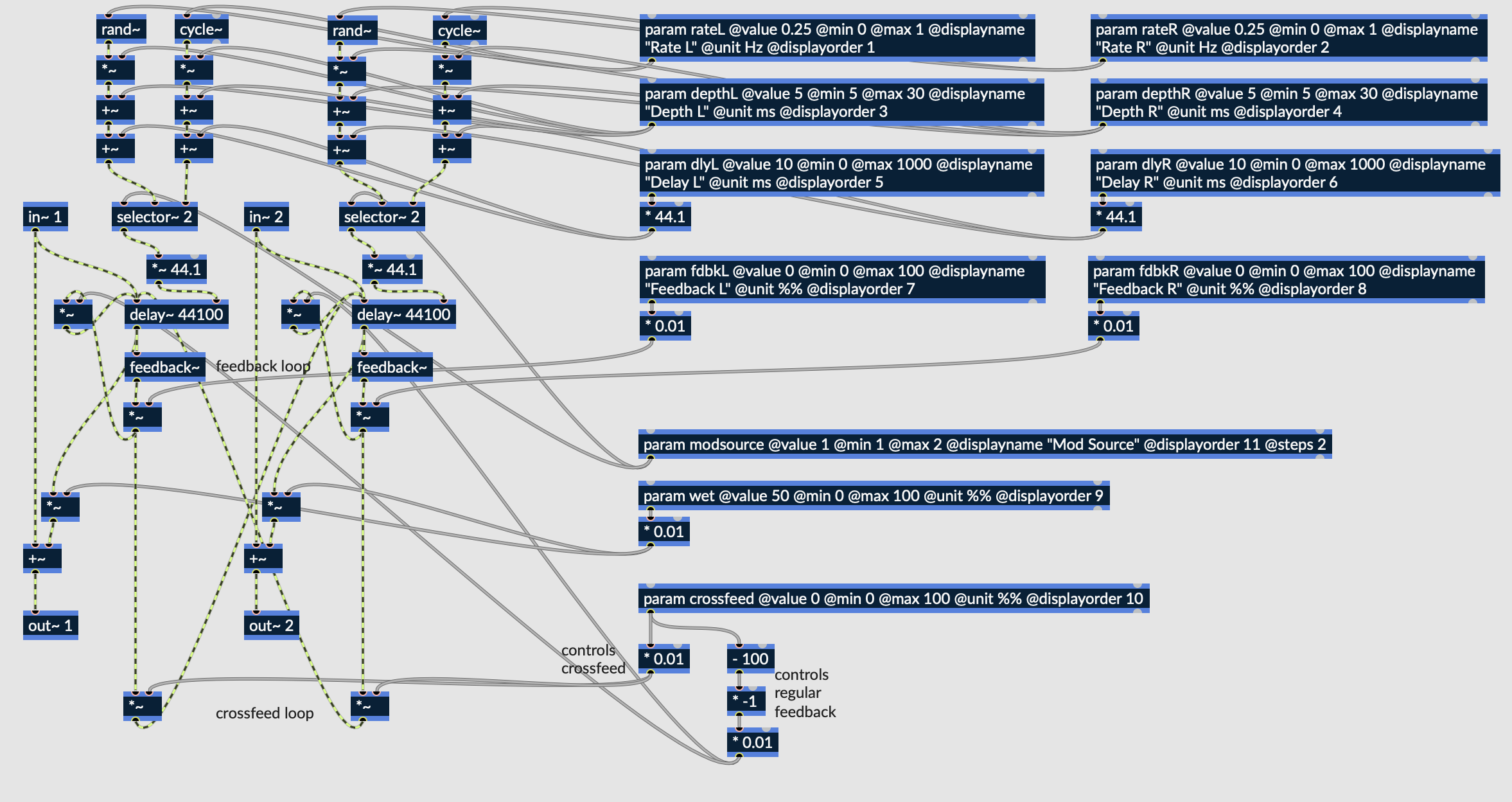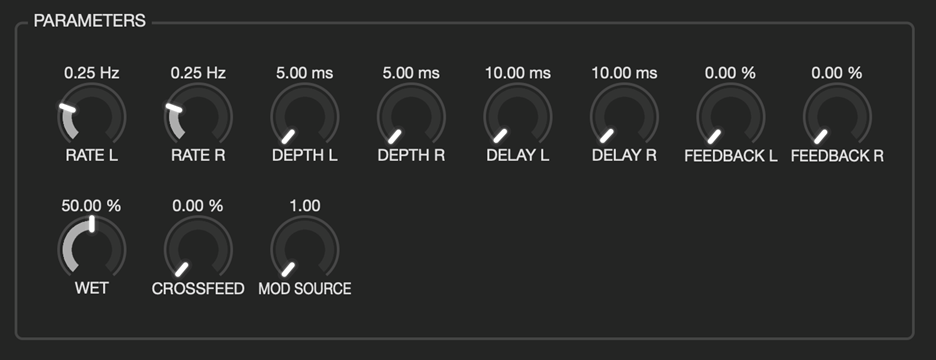6.4.11. RNBO Delay Tutorial #4 – Multiple Modulation Sources¶

Fig. 6.111 Crossfed stereo flanger with multiple modulation sources¶
The above patch is the final in the Delay Tutorials series and expands on the previous patch by adding an additional modulation source, and a parameter which allows the user to select their desired modulation source.
Download the maxpat file here: Multiple Modulation Sources.
6.4.11.1. Selector~¶
The process of adding another modulation source is quite simple. In this case, the rand~ object is used, which is a band limited random signal generator. The operations performed on the random signal, and their associated parameters, are the same as those performed on the sine wave signal generated by cycle~. In fact, the same param objects are used to control both mod sources.

Fig. 6.112 Rand~ and Cycle objects both being used as modulation sources, toggleable via a Selector~¶
Switching between modulation sources, however, requires the addition of selector~ objects. Selector~ accepts inputs from several sources, assigning one input at a time to the output. A new param object, labeled “modsource,” sends a value to the leftmost inlet of selector~, which selects which input is to be passed to the output. A value of 1 passes the random signal, while a value of 2 passes the sine wave.

Fig. 6.113 UI displayed in Emote¶
Upon exporting to Emote, the above menu will be displayed to the user. The addition of a modulation source has not significantly changed the algorithm, but now allows for a slightly different texture than was available with the regular Stereo Flanger. The rand~ object creates a modulation effect more akin to a chorus.